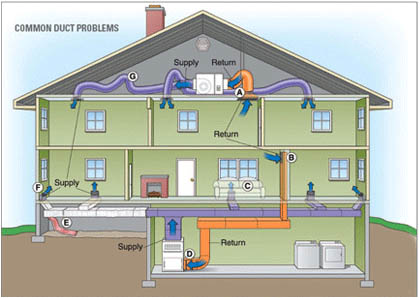 Heating and cooling are two of the most important concepts of home ownership. You may frequently hear the term “HVAC,” which is used to describe home heating and cooling systems. The acronym stands for Heating, Ventilation and Air Conditioning–which are the three primary functions of a home system.
Heating and cooling are two of the most important concepts of home ownership. You may frequently hear the term “HVAC,” which is used to describe home heating and cooling systems. The acronym stands for Heating, Ventilation and Air Conditioning–which are the three primary functions of a home system.
Heating and cooling systems may be classified as central or local. Central heating and cooling is the most standard method, and is defined by a system that produces warm or cool air in one central area and then distributes it throughout the home. There are many types of systems that work as central systems, from traditional split systems to packaged product systems.
In the typical residential split system design, the furnace contains a fan that forces air through the system during both the winter and summer months. A variable speed fan in your furnace improves heating and cooling efficiency, provides better comfort and indoor air quality control – always get a furnace equipped with a variable speed fan. Like central systems, mini splits have two main components: an outdoor compressor/condenser, and an indoor air-handling unit. A conduit, which houses the power cable, refrigerant tubing, suction tubing, and a condensate drain, links the outdoor and indoor units.
As the name implies, a ductless split system does not rely on air ducts to route treated air through your home or office. Instead, these specialty products are added for a specific room, such as a home theatre, an exercise room, a garage, or other room where adding ducts is impractical. These comfort systems can supply heating, cooling, or both, and are a split-system in that the condensing unit sits outside your home while the indoor unit sits unobtrusively on the wall to control and direct the airflow. These Carrier systems are full-featured and couldn’t be any easier to operate.
Residential Forced Air Split Systems are ideal for homes with forced air furnaces typically located in the basement while Ductless Split Air Conditioning Systems are recommended for homes with electric baseboard or water-based radiator systems.
